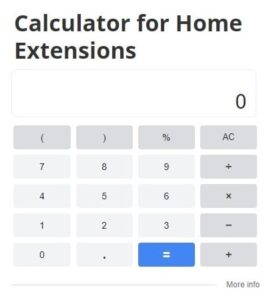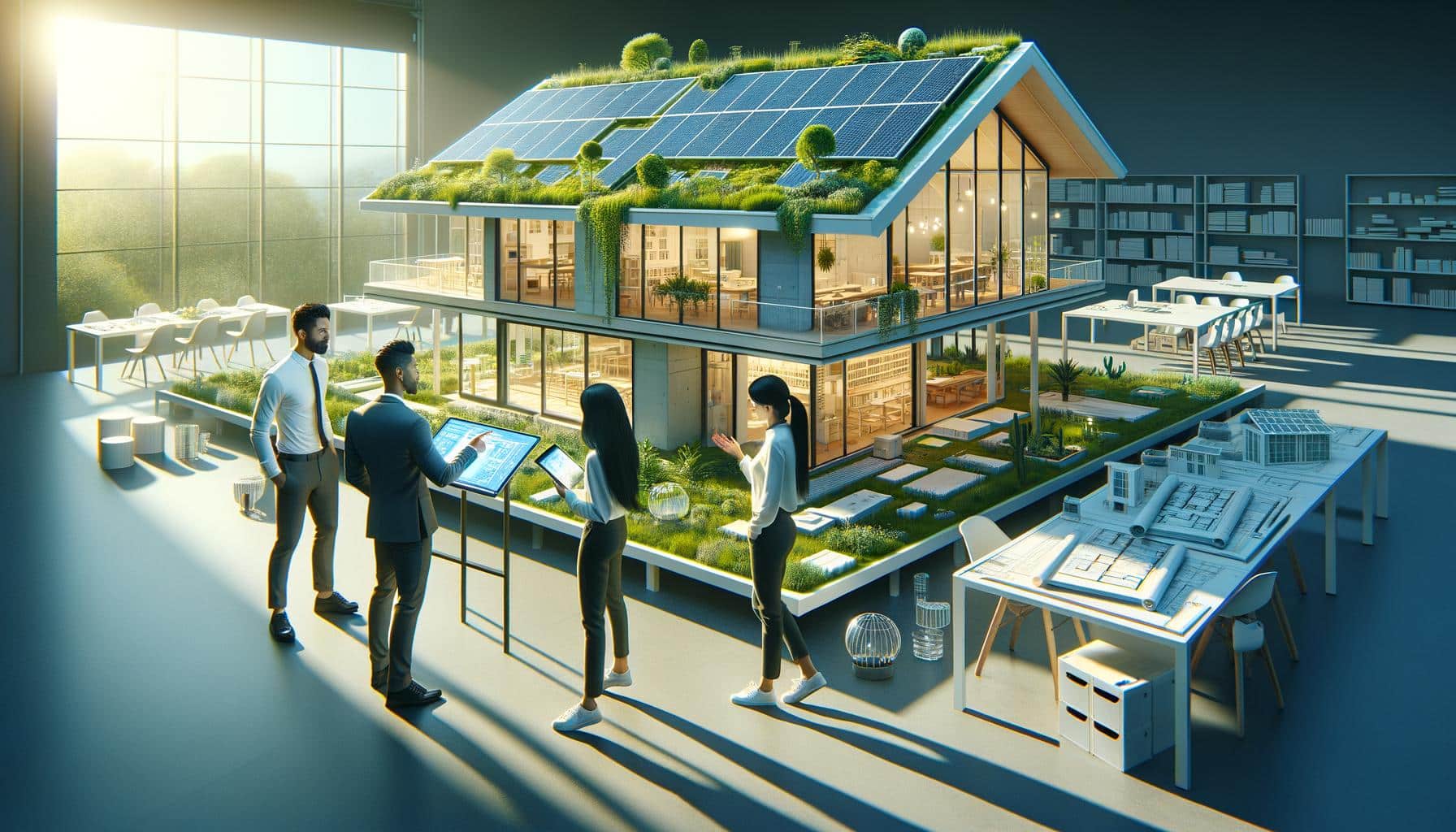
At Home Owners Association, we’ve seen a growing interest in eco-friendly home building plans. The demand for sustainable housing solutions is on the rise, with homeowners seeking ways to reduce their environmental impact.
Creating eco home building plans isn’t just about being green; it’s about smart, efficient design that saves money and resources in the long run. In this post, we’ll explore practical strategies for developing sustainable home designs that benefit both you and the planet.
What Are the Best Sustainable Materials for Home Building?
The Power of Renewable and Recycled Materials
Choosing the right materials for your eco-friendly home is a critical step in creating a sustainable living space. Renewable and recycled materials offer multiple benefits. These materials reduce the demand for new resources, lower your carbon footprint, and often provide superior durability.
Top Eco-Friendly Building Materials
Bamboo
This fast-growing grass is incredibly strong and versatile. You can use it for flooring, furniture, and even structural elements. Bamboo reaches maturity in just 3-5 years, compared to 20-120 years for traditional hardwoods.
Recycled Steel
Perfect for framing, recycled steel is strong, lightweight, and resistant to termites and rot.
Hempcrete
Made from the inner core of the hemp plant mixed with lime, hempcrete is a carbon-negative material. It offers excellent insulation properties and naturally resists mold and pests.
Reclaimed Wood
Using reclaimed wood not only adds character to your home but also prevents deforestation.
The Importance of Locally Sourced Materials
Locally sourced building materials reduce the carbon footprint and further sustainable architecture. Every material impacts a building’s embodied carbon.
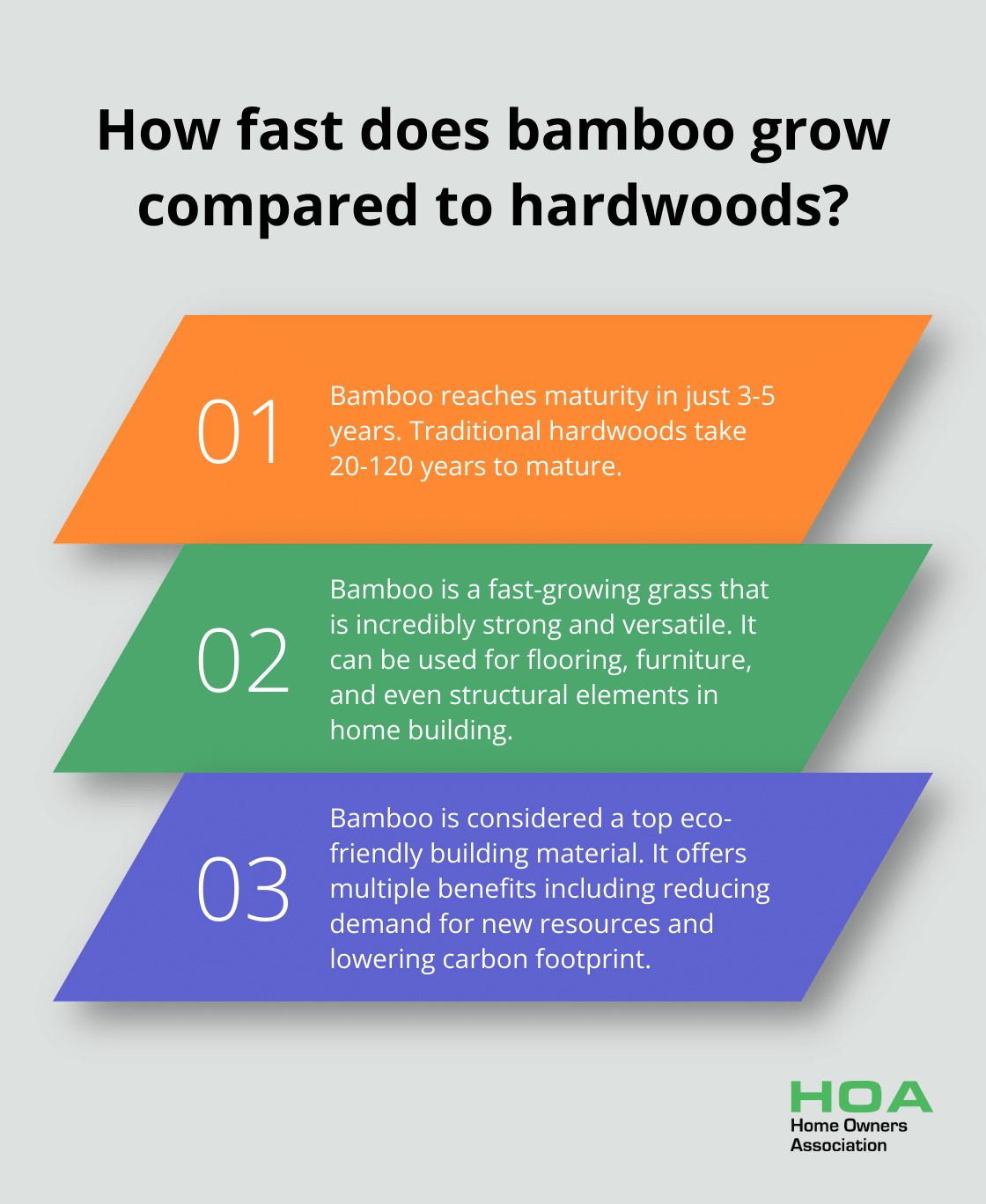
Local materials also support your community’s economy and often come with the added benefit of being better suited to your local climate. For example, in Australia, using locally sourced timber adapted to the climate can improve your home’s resilience to weather extremes.
Maximizing Material Efficiency
To truly optimize your material use, consider modular construction techniques. These methods can reduce waste compared to traditional building methods. This approach not only minimizes environmental impact but also speeds up construction time.
The careful selection of sustainable materials is not just about building a home; it’s an investment in the future of our planet. As we move forward, let’s explore how to incorporate these materials into energy-efficient design elements that will further enhance the sustainability of your home.
How to Design an Energy-Efficient Home
Energy efficiency stands at the core of sustainable living. Smart design choices can dramatically reduce energy consumption and costs for homeowners across Australia.
Harness the Power of the Sun
Passive solar design transforms energy efficiency. The main methods to achieve passive heating are to place living areas on the north side of your home, and include north-facing windows that let sunshine reach the interior. This approach significantly reduces reliance on artificial lighting and heating systems.
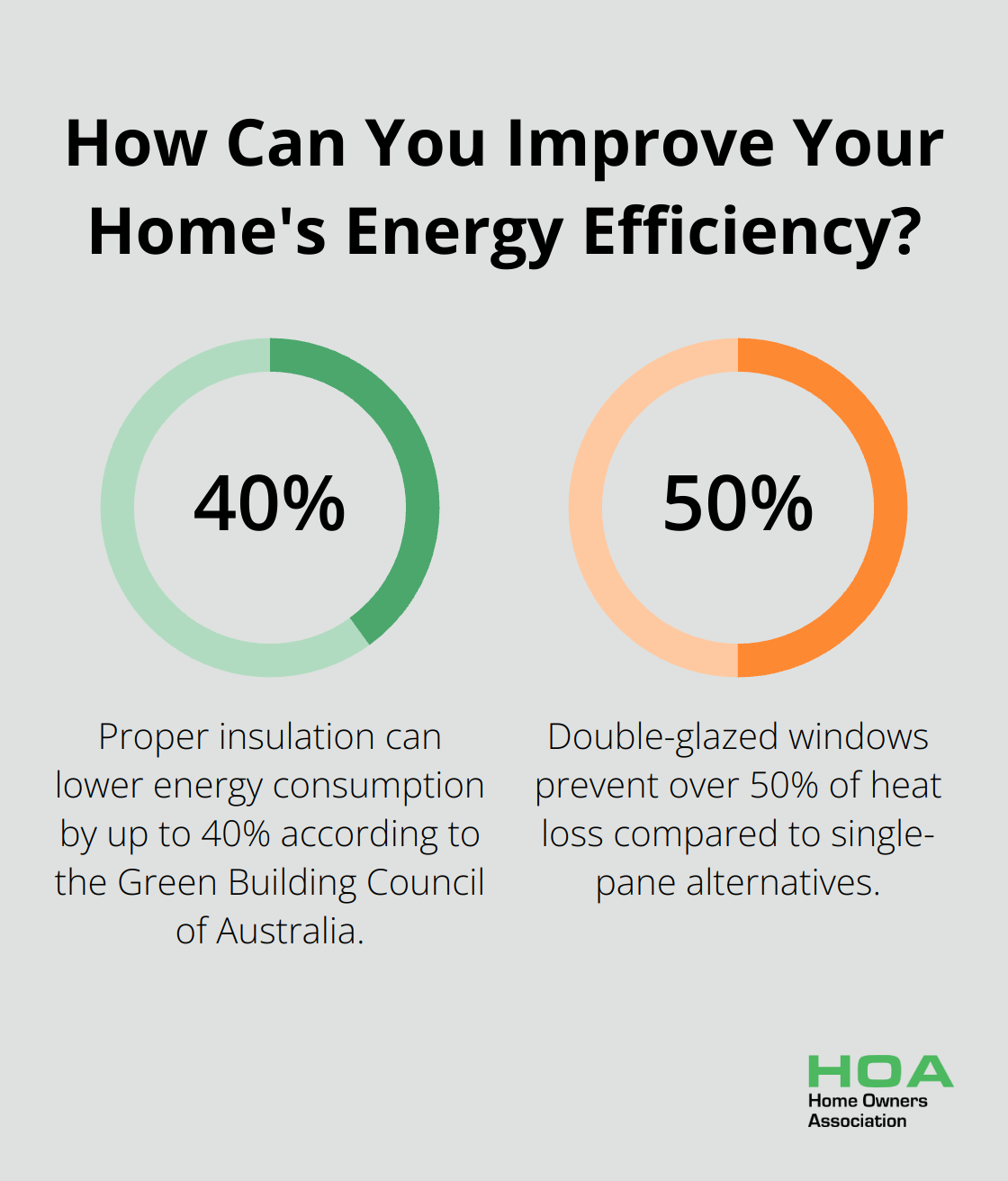
Strategic placement of thermal mass materials (like concrete floors or brick walls) absorbs heat during the day and releases it at night. This technique maintains a comfortable temperature without constant heating or cooling, potentially reducing energy use by up to 30% in some climates.
Wrap Your Home in Efficiency
High-performance insulation maintains your home’s temperature and reduces energy waste. The Green Building Council of Australia reports proper insulation can lower energy consumption by up to 40%. When selecting insulation, consider both the R-value (thermal resistance) and the material’s environmental impact.
Natural wool insulation gains popularity in Australia due to its excellent insulating properties and sustainability. It’s renewable, biodegradable, and performs well in our varied climate conditions. For those seeking alternatives, recycled polyester insulation (made from plastic bottles) offers another eco-friendly option.
Windows and Doors: Gateways to Efficiency
Energy-efficient windows and doors create a well-insulated home envelope. Double-glazed windows prevent over 50% of heat loss compared to single-pane alternatives. In Australia’s climate, low-E glass coatings reflect heat while allowing light to pass through.
For doors, materials with high insulation properties like fiberglass or steel with polyurethane foam cores work best. Proper weatherstripping is essential – even small gaps lead to significant energy loss. The Australian Window Association recommends selecting windows and doors with a high Window Energy Rating Scheme (WERS) rating to ensure optimal performance.
Smart Home Technology
Incorporating smart home technology enhances energy efficiency. Various smart home technologies contribute to energy efficiency and can be integrated into your home. Smart thermostats learn your habits and adjust temperature settings accordingly, potentially leading to savings on heating and cooling costs. Energy monitoring devices provide real-time data on energy consumption, allowing homeowners to identify and address energy-hungry appliances or behaviors.
These energy-efficient design elements not only reduce your carbon footprint but also lead to substantial long-term savings on energy bills. As we face the challenges of climate change, these strategies become increasingly important for creating resilient, comfortable homes. The next step in creating an eco-friendly home involves implementing water conservation strategies, which we’ll explore in the following section.
How to Save Water at Home
Harvest Rainwater for Domestic Use
Rainwater harvesting has a triple benefit in urban areas. It reduces the costs of water infrastructure across the urban system and decreases reliance on mains water supply. A typical system includes gutters, downpipes, and a storage tank.
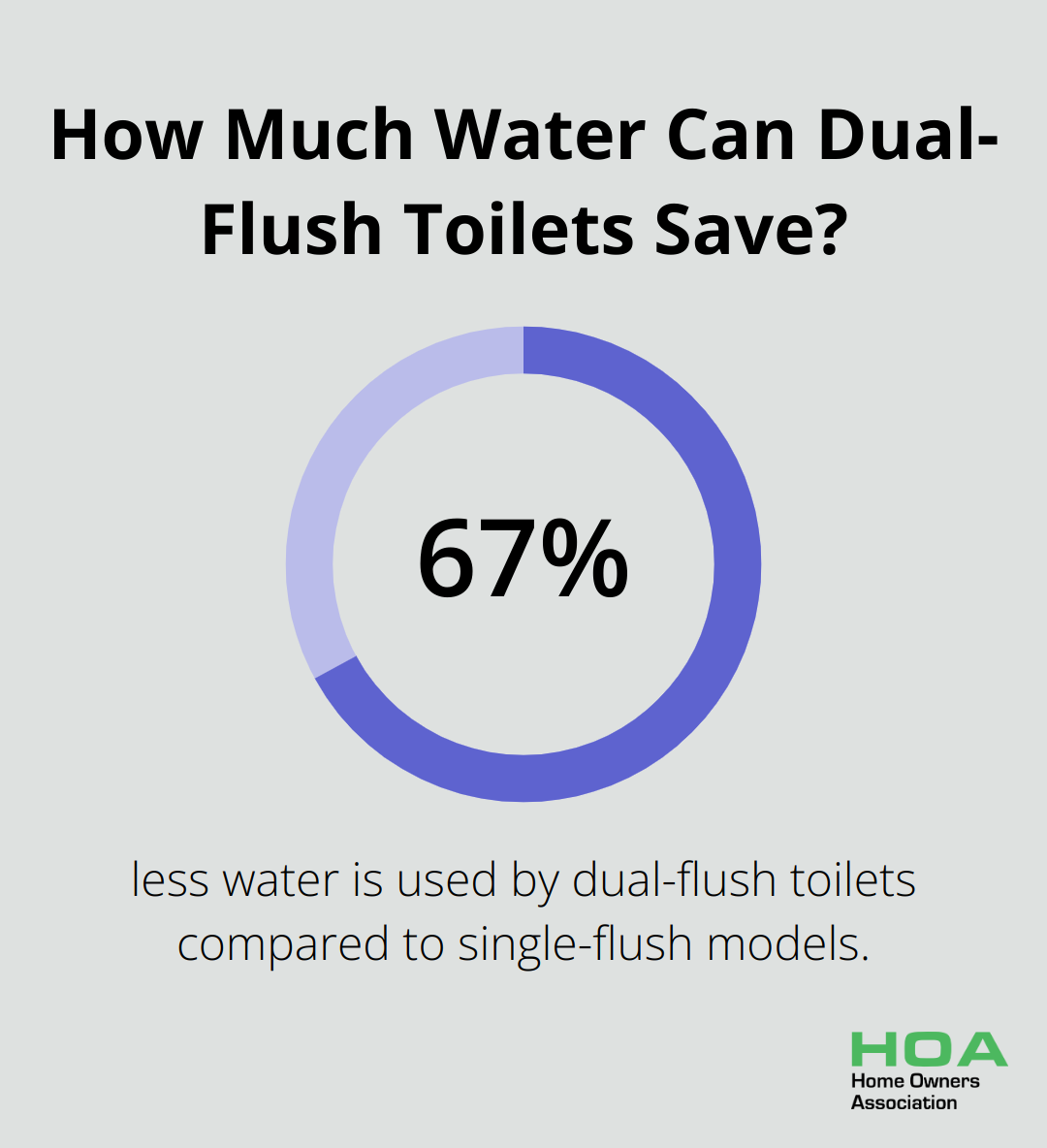
When you install a rainwater harvesting system, consider your roof size and local rainfall patterns. Areas with high rainfall (like parts of Queensland) might require a larger tank to capture excess water during wet seasons. Include a first-flush diverter to prevent contaminants from entering your tank.
Recycle Greywater for Garden Use
Greywater recycling reuses water from sinks, showers, and laundry for irrigation. Untreated greywater can be used in dry periods for gardens in Victoria, either by directly diverting it from household plumbing fixtures or through other methods.
To implement a greywater system, use plant-friendly, biodegradable soaps and detergents. Avoid using greywater on edible plants or allowing it to pool on the surface to prevent health risks. Check local regulations before installing a greywater system, as requirements vary across different states and territories.
Upgrade to Water-Efficient Fixtures
Replace old fixtures with water-efficient models to significantly reduce water consumption. The Water Efficiency Labelling and Standards (WELS) scheme helps Australians identify water-efficient products. Select products with high star ratings when upgrading.
Switching to a 4-star rated showerhead can save up to 25,000 liters of water per year for a family of four. Dual-flush toilets use up to 67% less water compared to single-flush models. In the laundry, front-loading washing machines typically use 50% less water than top-loaders.
Adopt Water-Saving Habits
Water conservation extends beyond new systems or fixtures. Fix leaks promptly, take shorter showers, and use mulch in your garden to make a big difference. These simple habits not only reduce your water bill but also contribute to a more sustainable future for Australia.
Monitor Water Usage
Install water meters or smart water monitoring devices to track your household’s water consumption. These tools provide real-time data on water usage, helping you identify areas for improvement and adjust your habits accordingly. Some systems even alert you to potential leaks, allowing for quick action to prevent water waste.
Final Thoughts
Eco home building plans combine innovation, sustainability, and long-term thinking. These plans select sustainable materials, incorporate energy-efficient design elements, and implement water conservation strategies. The result is environmentally friendly homes that are cost-effective and comfortable.
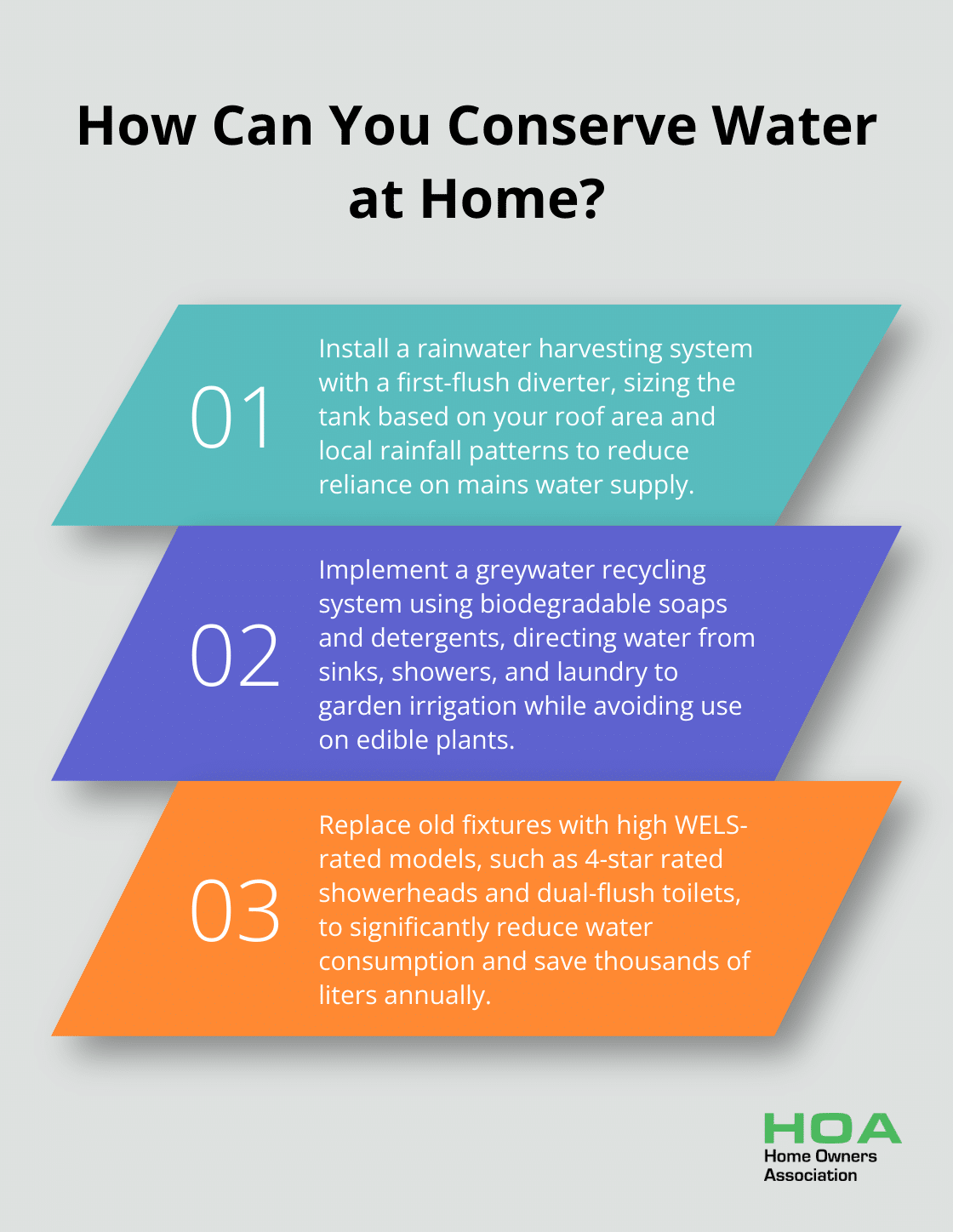
Sustainable home design benefits extend beyond the initial construction phase. Homeowners who embrace eco-friendly practices often experience lower utility bills, improved indoor air quality, and increased property values. These homes also show more resilience to climate change and contribute to a healthier planet for future generations.
We at Home Owners Association have witnessed how sustainable building practices transform lives and communities in Melbourne. Our members can access trade pricing, discounts, and expert advice, which makes eco-friendly home projects easier and more affordable. We encourage you to start your green building journey today, whether you plan a new construction or renovate an existing home.





